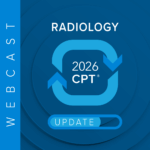Radiology coding faces trying times in 2024, with reimbursement cuts in full effect making it that much harder to achieve accurate reimbursement. Every coding dollar remains on the line, with interventional radiology remaining a challenging modality with an endless opportunity for errors. One area our experts have targeted for review is biopsies. In the realm of radiology, biopsies serve as vital diagnostic procedures, often conducted under the guidance of various imaging modalities to ensure accuracy and precision. However, navigating the coding landscape for these procedures can be complex. From ultrasonic to fluoroscopic guidance, each method carries its own distinct coding nuances, impacting reimbursement and compliance. It’s imperative to understand the intricacies of assigning the appropriate guidance code alongside the surgical code, as outlined in the CPT® manual. Let’s explore the nuances for success in 2024 and beyond.
Gaining an Understanding of Guidance
In radiology, biopsies are typically conducted under image guidance, ensuring precision and accuracy. When coding for these procedures, it’s essential to assign the appropriate guidance code along with the surgical code, unless specified otherwise in the code description or accompanying parenthetical notes. This ensures accurate reimbursement and compliance with coding guidelines.
| 76942 |
Ultrasonic guidance for needle placement (e.g., biopsy, aspiration, injection, localization device), imaging supervision, and interpretation |
| +77002 |
Fluoroscopic guidance for needle placement (e.g., biopsy, aspiration, injection, localization device)
(List separately in addition to code for primary procedure) |
| +77003 |
Fluoroscopic guidance and localization of needle or catheter tip for spine or paraspinous diagnostic or therapeutic injection procedures (epidural or subarachnoid)
(List separately in addition to code for primary procedure) |
| 77012 |
Computed tomography guidance for needle placement (e.g., biopsy, aspiration, injection, localization device), radiological supervision and interpretation |
| 77021 |
Magnetic resonance imaging guidance for needle placement (e.g., for biopsy, needle aspiration, injection, or placement of localization device) radiological supervision and interpretation |
Analyzing Aspiration Biopsy
Note that in 2019, changes were made to code 10021, and code 10022 was eliminated. Furthermore, a new set of codes was introduced to accommodate fine needle aspiration biopsy procedures. Fine needle aspiration (FNA) biopsy entails the extraction of cells via a needle rather than a tissue core, with the collected aspirate then undergoing cytologic evaluation at the lab.
The available codes offer flexibility for different scenarios: FNA procedures carried out without imaging guidance, those performed with imaging guidance, initial lesion biopsies, and additional lesion biopsies. Determine the suitable code based on the type of guidance utilized, avoiding redundant reporting of a separate imaging guidance code. Do not also report a separate imaging guidance code. In each of these code sets, there is a code for FNA of an initial lesion and one for each additional lesion. The “each additional lesion” codes are add-on codes that must be reported with a primary code. Do not report the “each additional lesion” code for additional passes within the same lesion.
When performing biopsies on multiple lesions with FNA under the same imaging modality guidance, code the second and subsequent lesions using the “each additional lesion” code. If biopsies are conducted on multiple lesions using different imaging modalities, code the first lesion biopsied under each modality with the respective “first lesion” code. For example, when biopsying two lesions, one under ultrasound guidance and another under CT guidance, report 10005 for the first lesion and 10009-59 for the second lesion.
| 10021 |
Fine needle aspiration biopsy, without imaging guidance; first lesion |
| +10004 |
Fine needle aspiration biopsy, without imaging guidance; each additional lesion
(List separately in addition to code for primary procedure.) |
Breaking Down Biopsy
Understand that codes 10021 and 10004 are seldom utilized in the radiology department, as they are designated for FNA procedures conducted without any imaging guidance. Typically, these codes find more relevance in office settings or on inpatient floors.
| 10005 |
Fine needle aspiration biopsy, including ultrasound guidance; first lesion |
| +10006 |
Fine needle aspiration biopsy, including ultrasound guidance; each additional lesion
(List separately in addition to code for the primary procedure) |
| 10007 |
Fine needle aspiration biopsy, including fluoroscopic guidance; first lesion |
| +10008 |
Fine needle aspiration biopsy, including CT guidance; first lesion |
| +10010 |
Fine needle aspiration biopsy, including CT guidance; each additional lesion
(List separately in addition to code for primary procedure.) |
| 10011 |
Fine needle aspiration biopsy, including MR guidance; first lesion |
| +10012 |
Fine needle aspiration biopsy, including MR guidance; each additional lesion
(List separately in addition to code for primary procedure.) |
According to guidelines in the CPT manual, if an FNA biopsy and a core biopsy are performed on the same lesion, both may be billed, however, if the same type of guidance is used for both, the modality guidance code should not be reported for the core biopsy. If different guidance modalities are used, the modality guidance code for the core biopsy would be reported, modifier 59 may be necessary. In addition to the above codes, there are other more specific codes for aspiration biopsy. Some of the more common aspiration biopsy codes are listed below.
| 38220 |
Diagnostic bone marrow; aspiration(s) |
| 38222 |
Diagnostic bone marrow; biopsy(ies) and aspiration(s) |
Bone-marrow aspiration for diagnostic purposes is reported with code 38220 when performed as a stand-alone procedure or through a separate access from a bone-marrow biopsy. When bone-marrow aspiration is performed in addition to and through the same access as bone marrow biopsy, report code 38222 instead of 38220 (and 38221).
| 62267 |
Percutaneous aspiration within the nucleus pulposus, intervertebral disc, or paravertebral tissue for diagnostic purposes |
While code 62267 is specific to aspiration for diagnostic purposes, most aspiration codes can be used for either diagnostic (biopsy) or therapeutic aspiration.
These are NOT all the tips and tricks necessary to tackle biopsy interventional radiology coding.
As service volumes rebound and every dollar of reimbursement counts more than ever in the face of payment cuts, it’s imperative to make sure your CPT® coding is correct and compliant. Master more IR coding topics and break down the complexity with our expert-infused Catheter-Based Drainage Interventional Radiology Coding webcast. This webcast is an essential training tool for both audio and visual learners.













